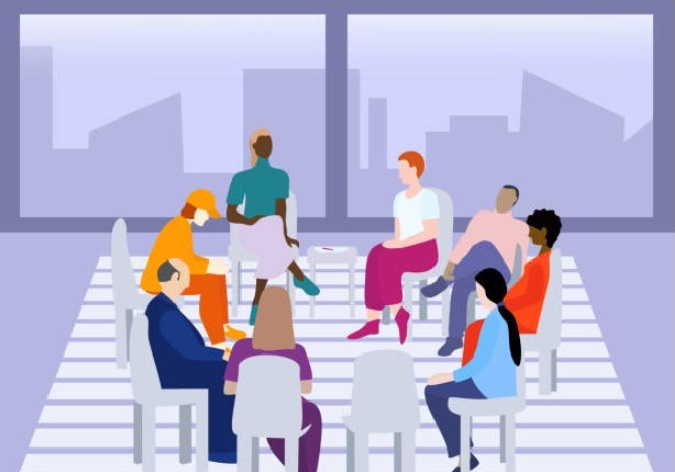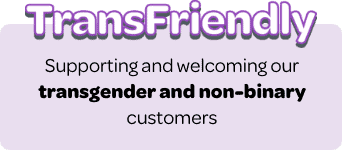
This is the second in a three-part blog series about IntraSpectrum Counseling psychotherapy groups for those interested in learning more about group therapy or getting started with a group; click here for Part One. ISC therapy groups provide safe & affirming spaces for clients to share their stories with others, make connections, receive support, learn new skills, and experience a sense of belonging, security and visibility.
New Therapy Groups form each season of the year, and we invite you to join us. If you’re ready to begin a new therapy group that’s currently open for enrollment, submit an Inquiry Form on our website. You can also get details about our Groups program, browse Group Therapy FAQs or submit a Groups contact form for detailed answers to your specific questions.
______________________________________________________
How Does Group Therapy Work?
Group therapy provides a safe & affirming space where you come together with others to learn from and with each other, share problems or concerns, and to better understand your own situation. Under the leadership of two trained mental health therapists, you will gain self-understanding, support, and new tools and skills for dealing with your concerns and improving your relationships with other people. Members also become therapeutic helpers for other group members, as you practice new ways of interacting with others, and identify with issues other members share.
How Many Sessions are Offered Per Therapy Group?
Our Therapy Groups are closed (meaning that all members join at the same time, remain in the group for its duration, and only they may participate in sessions). They run for 8-12 weekly sessions, depending on the specific Group. Before a Group begins, you will receive the complete meeting schedule (including any holidays on which the Group will not meet). Your availability to attend the Group sessions should be a factor in determining whether or not the Group is right for you. It’s important that participants be present and engaged in every session, in order to get the most out of the Group Therapy experience. In addition, the cost for the Therapy Group is based on all sessions. We divide the fee into weekly payments for your convenience, but there is no cancellation policy for Therapy Groups; participants are responsible for all session fees, even for weeks they do not attend.
What Happens During Group Therapy?
No matter the type of therapy group or its focus, there are a few common elements that you can expect:
- Regularly-scheduled sessions: closed therapy groups meet on a consistent schedule (day of week, time and place) for a specific duration / number of sessions. It’s important to make sure the meeting schedule is compatible with yours before you commit to a therapy group.
- Facilitation by trained therapists: this is one major difference between group therapy and self-help, 12-step or other forms of support groups which are led by a peer rather than professionals who have experience and qualifications in leading psychotherapy groups.
- Active listening: In a group therapy setting, not all clients can speak at once. Group members take turns, which gives others the chance to practice active listening, and facilitates a sense of contribution.
- Active sharing: Sharing your thoughts and experiences in group therapy is an important part of healing, processing, and using new skills & tools. Whether it’s about your past, a current situation or the future, sharing can sometimes trigger feelings of vulnerability, etc. This is why it’s important to work with qualified therapists who can facilitate trust, bonding and personal growth.
- Social support: One of the most powerful aspects of group therapy is realizing that you aren’t alone. Group members support each other as you work towards healing. Listening to other members share their mental health issues / stories helps you understand more about what you’re going through.
- Activities: these help promote trust and communication within the group. They might be used as icebreakers to help group members get to know each other, or to achieve a common goal, to strengthen trust, or to build confidence outside of therapy. Common activities might involve reading and sharing stories, or being physically active in team-focused exercises (e.g. stretching, dancing, playing music, role playing).
What Does a Group Therapy Session Look Like?
The Group Therapy session is a collaborative time in which the therapists assume clinical responsibility for the group and its members. In a typical session, (which typically lasts about 90 minutes, once a week), members work to express their own problems, feelings, ideas, and reactions as freely and honestly as possible. This type of exploration gives the group the important information that members need in order to understand and help one another.
- Usually led by two trained therapists
- Group size can range from six to 12+ members (the process can be less effective in much larger groups)
- Typically, groups meet each week (with breaks for major holidays that fall on meeting day).
- The length of a group can vary – the minimum number of sessions within a closed group is often eight
- Some people participate in both individual therapy and group therapy. Others who’ve been in therapy in the past may choose to participate in only group therapy
- In-person meetings are typically held in a quiet setting, with furniture arranged so everyone can see each other
- Groups usually start with members introducing themselves, discussing progress, or sharing the reason they are in group therapy, checking in about how they’re feeling
- Specific group activities depend on the style of therapist and the group’s goals, as well as whether the group is in-person or online
How Many Participants are in a Typical Therapy Group?
Most groups have between 6-10 members depending on the type of group, and 2 group therapists. Groups with more than 12 members can become less productive, more difficult to manage.
What Makes the Group Therapy Experience Unique and Powerful?
First, most members identify with the issues that other members share, and find they are helping themselves just by being present and processing the issues vicariously. Similarly, by listening and giving feedback to group members who are sharing their concerns, you may also be practicing new ways of interacting with others. Therapy groups offer the opportunity to get multiple perspectives, increased support from peers, a safe place to try out new behaviors and ways of being, and new and practical go-forward tools/strategies to use after the group has concluded.
Advantages of Group Therapy:
- Provides a safe space
- Members learn from each other
- Cost is less than individual therapy
- Helps you grow, learn new skills
- Comfortable way to ease into therapy
- Lower level of commitment than individual, relationship, family or adolescent
Limitations of Group Therapy:
- Less privacy. Sharing in a group therapy setting inherently means less confidentiality than in individual therapy.
- Reliance on group attendance. It’s only group therapy if each group member shows up — both physically and emotionally. Group bonding, trust and cohesion is reduced if some members don’t attend regularly, and that impacts everyone’s experience.
- Limited scheduling flexibility. Group therapy sessions are usually scheduled at the same time every week, which may present a challenge if your schedule is changeable.
- Potential “social loafing”. This term refers to a phenomenon where one / some group member(s) rely on positive outcomes of their peers to make them feel successful in their own healing. There will of course be a range of mental health progress made in any group therapy setting. But if a group member puts little effort into their own mental health journey, it can impact the dynamics of the group itself.
Is Group Therapy “Better” than Individual Therapy?
That depends on your personal preferences, mental health goals and specific diagnosis. Group therapy and individual therapy often occur concurrently. Processing through the feelings from group therapy with your individual therapist can give you additional insight. Group therapy can also be effective as a standalone intervention. It offers a great way to socialize and find support from multiple sources, rather than just with one therapist. And for those who are new to therapy, groups can be a great way to get started working with a therapist.
Check back soon for the final installment of our A Guide to Group Therapy blog series — with lots more things to know, before you go.
______________________________________________________
IntraSpectrum Counseling is Chicago’s leading psychotherapy practice dedicated to the LGBTQ+ community, and we strive to provide the highest quality mental health care for multicultural, kink, polyamorous, and intersectional issues. If you need affirming and validating support for individual, relationship, adolescent, family or group therapy, please click here to get started.






 Today, July 26th, is National Disability Independence Day. This annual commemoration marks the day in 1990 when the Americans with Disabilities Act (ADA) was signed into law. The ADA enshrined several crucial civil rights protections for individuals with disabilities, but it still falls short of its intended goals after over 30 years on the books.
Today, July 26th, is National Disability Independence Day. This annual commemoration marks the day in 1990 when the Americans with Disabilities Act (ADA) was signed into law. The ADA enshrined several crucial civil rights protections for individuals with disabilities, but it still falls short of its intended goals after over 30 years on the books.